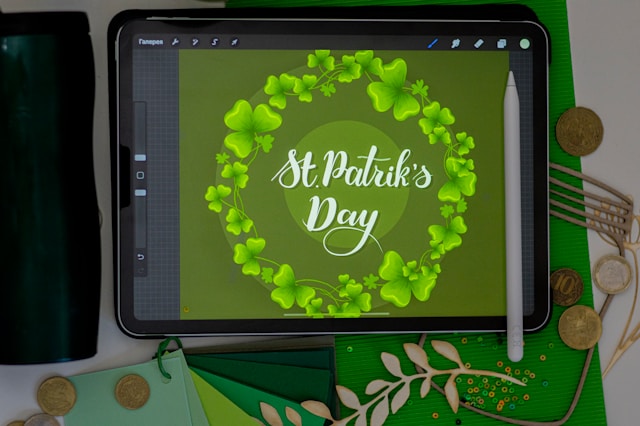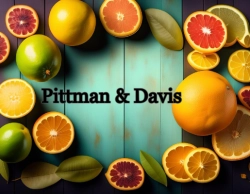From Patron Saint to Global Celebration: The History of St. Patrick's Day

St. Patrick's Day is celebrated consistently on March 17th. It began as a strict religious celebration for the patron saint of Ireland, but presently it's an overall party to celebrate Irish culture. The Catholic Church picked the feast day in the early 17th century St. Patrick, the day currently incorporates various approaches to praising that is done by a million individuals all over the world. This article discusses the complicated history and changes of St. Patrick's Day is an exceptional cultural event. Individuals celebrate it with customs that have been around for quite a while. They additionally find out about where it came from and how it has changed. From when it initially began to how it is currently, St. Patrick's Day is a celebration of the strength and cultural pride of the Irish public. It also remembers different communities that join in the festivities every year.
Origins of St. Patrick's Day
The beginnings of St. Patrick, the patron saint of Ireland. It has since turned into a festival of Irish culture and legacy. Patrick is the exceptional saint of Ireland. St. Patrick lived in the fifth century and was notable for spreading Christianity in Ireland as an evangelist. He played a vital part in this. Legends surrounding St. Patrick abound, including the notable one where he utilized a three-leafed shamrock to explain the Holy Trinity. Initially, St Patrick's Day was celebrated as a serious religious occasion. Individuals went to church, prayed, and had huge feasts to recognize the saint. The day was vital for the Irish public, both in their nation of origin and different nations, because it was a way for them to recall and celebrate their way of life and religious beliefs. Throughout the long term, St. Patrick's Day began as a religious holiday but presently it's also celebrated by Irish immigrants in the US as a cultural event.
Evolution of Celebrations
The growth of St. Patrick's Day used to be a religious holiday, however, it turned into a big party for everybody during the 1800s because lots of Irish individuals moved to the US. They faced discrimination and hardship in their new nation, however, they persevered and made huge contributions to American society. The celebration of St. Patrick's Day is presently a cherished tradition in the US. Patrick's Day is a celebration that happens consistently on March 17th. In big cities like New York, Boston, and Chicago, Irish groups organized celebrations and parades to show their pride and personality in their way of life. These early celebrations assisted with holding Irish customs alive and united individuals to show strength and courage during difficult situations. Over time, St. Patrick's Day gradually changed and adjusted to new situations. St Patrick's Day parades got greater and fancier, acquiring individuals from various backgrounds to take part or watch.
Traditions and Customs
Various traditions and customs are associated with St. Patrick's Day interfacing the old religious beginnings with the advanced approach to celebrating.
- Wearing Green: St Patrick's Day has numerous traditions and customs that show its religious and cultural significance. One of the most dependable traditions is wearing green. It expresses Ireland's lovely nature and is remembered to bring favorable luck. Individuals all around the world wear green clothes and things, and even make rivers and popular spots green to celebrate the occasion.
- Parades: Individuals dress up in green, play music, and walk through the roads in a vivacious way. A joyous and festive event unites communities together to celebrate Irish culture and legacy. On St Patrick's Day, cities all around the world have large parades with music, decorated cars, and individuals dancing. Irish music and dance are vital, with quick and lively dances and reels played at pubs, concerts, and street parties. Also, eating a lot of food is a significant custom for the Irish.
- Feasting: Food is vital to St. Patrick's Day celebrations. Exemplary Irish food sources like corned hamburger and cabbage, Irish stew, soft drink bread, and Guinness pie are the main attractions. Bars and restaurants are offering huge feasts with beer and whiskey, which adds to the fun of the holiday.
Contemporary Observances
In current times, St. Patrick's Day is presently celebrated around the world, with parties occurring in numerous cities and towns. Certain individuals still wear green, go to parades, and eat Irish food. But, presently there are also better approaches to celebrate because things change after some time. One exceptional tradition is "Global Greening" which was begun by Tourism Ireland in 2010. This tradition lights up well-known landmarks and buildings in green to celebrate St. Patrick's Day. These popular buildings, such as the Sydney Opera House and the Empire State Building, demonstrate Irish pride and solidarity. They bring individuals from various regions of the world together to celebrate their Irish heritage. Also, parties that everybody can go to, St. Patrick's Day, certain individuals celebrate in more modest gatherings with their families and friends at home. Irish music and dance are often in the spotlight, along with games, storytelling, and different activities that honor Irish culture and identity.
Conclusion
St. Patrick's Day used to be a religious day to respect Ireland's patron saint, but presently it's an overall festival of Irish culture and identity. The early Christian church started the tradition, yet presently everybody from various backgrounds meets up to celebrate Irish pride and custom. Regardless of changing over numerous years, St. Patrick's Day is still vital to Ireland and individuals have moved away, demonstrating how it keeps on being an extraordinary practice cherished by a lot of people all over the world. St. Patrick's Day is perceived by the Christian church as being particularly heavenly and deserving of love. St Patrick's Day is changing and developing. It's as still a period for parties, being with friends, and considering the history and customs that unite individuals.











